Quick search
Cycling is a popular activity in Europe, and with the recent statistics on cycling safety in mind, it is essential to ensure that you are highly visible on the road, especially in the dark. Good bicycle lighting is crucial. But how do you choose the right bicycle lights? In this buying guide, we provide you with some tips and considerations.
Why is Bicycle Lighting Necessary
First and foremost, it is required by EU law, just like reflectors. Children may find it unnecessary, especially if you have experience driving a car among cyclists, you’ll realize how dangerous it can be.
Cyclists are virtually invisible in the dark. With the right lighting (reflectors and fluorescent vests), you are visible and stand out.
- Safety: Bicycle lighting ensures that you are visible to other road users, reducing the risk of accidents.
- Legal requirement: In many countries, including EU countries, it is legally required to have bicycle lights at night and in poor visibility conditions (visible up to 200m). Fines range from 58 to 120 euros.
Being safe is about seeing and being seen:
- Seeing: These lights are more powerful and are intended to illuminate the road ahead of you. They have a higher lumen value and a narrower beam angle.
- Being seen: These lights are less powerful and are intended to ensure that other road users can see you. They have a wider beam angle and are often lighter and cheaper. A flashing function is also important here.
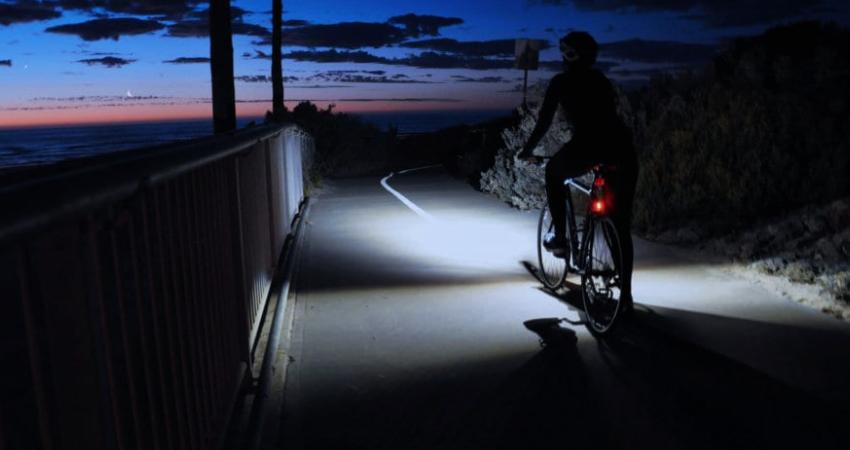
Types of Bike Lights
You may not realize it, but there are different types of bike lights. Yes, there are front and rear lights, but the placement can also vary (on the handlebars, wheel, frame, etc.). Additionally, there are lights with extremely high lumens, designed for mountain biking at night. If you use these on the road, you’ll completely blind oncoming traffic.
Front Lights:
These are usually white or yellow and are intended to illuminate the road and make you visible to oncoming traffic.
- Mount on the handlebars
- Mount under the handlebars
- Mount on the front wheel
- Available with battery and with dynamo
Rear Lights:
These are red and make you visible to traffic coming from behind.
- Mount on the seat post
- Mount on the luggage rack
- Mount on the rear wheel
- Available with battery and with dynamo
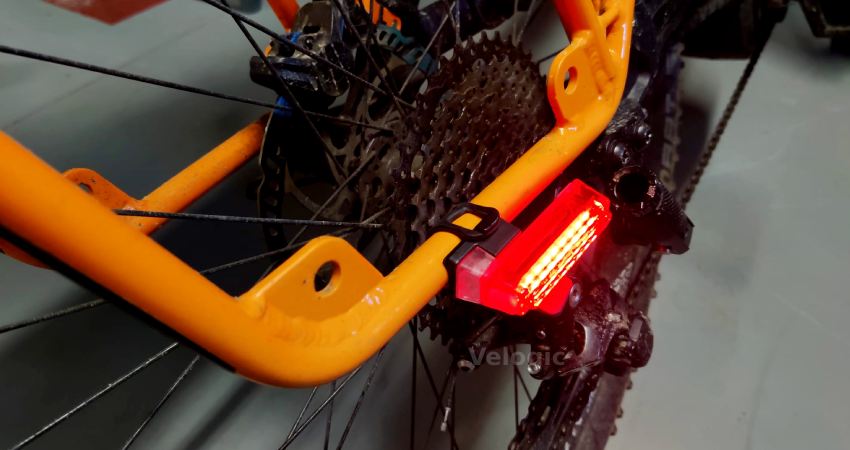
What to Consider When Choosing
Brightness: Lumens, Lux, and Flood Angle
Measured in lumens and lux, but the flood angle is also important. The higher the number of lumens, the brighter the light.
The number of lumens you need depends on your usage and the route. For city rides, 100-200 lumens is usually sufficient, but for dark country roads, it’s better to choose 400 lumens or more. If you’re mountain biking in the dark, you can opt for 1200-2000 lumens.
The number of lumens also affects the design, battery, and chosen LED lamps. With a high light output, you generate a lot of heat. A plastic bike light with high lumens can melt and break. These lights have a high wattage and consume a lot of energy. Therefore, the battery is also important.
For high quality, it’s best to choose CREE LED lamps and an aluminum housing. If you’re looking for a simple light, you don’t need such high lumens, and you can opt for lower quality.
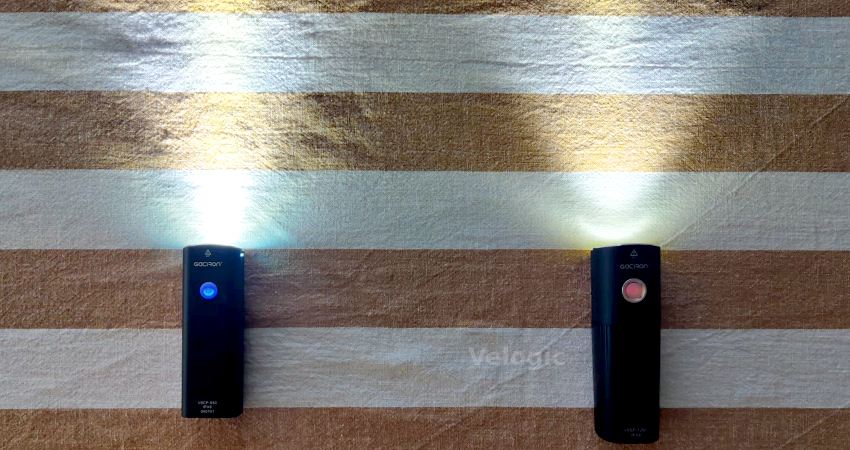
Battery Life and mAh
The battery capacity is expressed in mAh. However, this says little about the number of hours the bike light will work. Much depends again on the number of lumens and the wattage of the light.
A bike light with 1000 mAh and 50 lumens will last longer than a 2000 mAh bike light with 1600 lumens. Some lights have different modes that can extend battery life. Even better lights have a smart mode that determines the best function via a light sensor.
So, be sure to look at the battery life, but also at the different modes and options. These relatively small batteries can be quickly recharged. Nowadays, we also mainly buy bike lights with a USB-C connection. This way, we know that the batteries are relatively new and that the bike light charges faster.
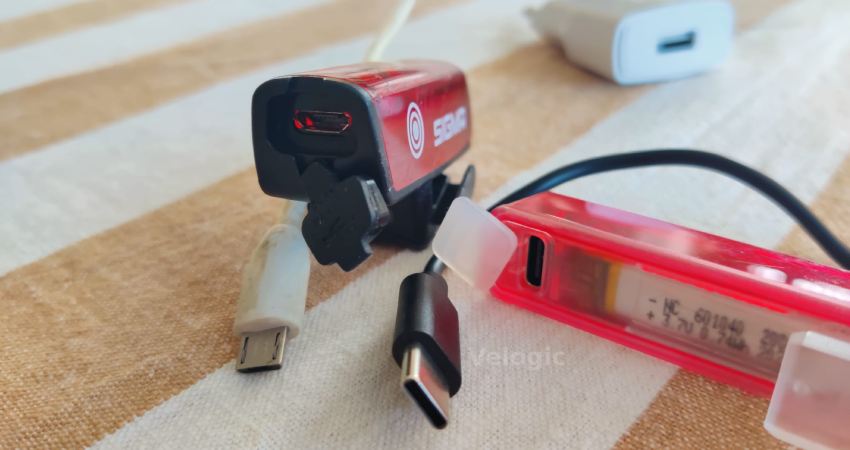
Mounting
Not only for your convenience but also to prevent theft. A light that takes effort to remove will make you more likely to leave it on the bike. And there are indeed people who engage in theft, even of bike lights.
Ensure that the light is easy to mount and remove, but above all, that it is securely attached during cycling. We often see bike lights with a simple rubber band. These can be easily lost and are relatively limited in quality.
Our advice; opt for high-quality hard plastic with rubber elements. These are the strongest and last the longest. Pay attention to the connection and don’t buy anything fragile. In the long term, in all weather conditions, this can break. These parts are usually not covered by the warranty.
So, examine the attachment carefully, as it affects your use and the quality of the lighting. Bike lights should be easy to install, and there should also be rotation options. Removal should not take too long; it should be user-friendly.
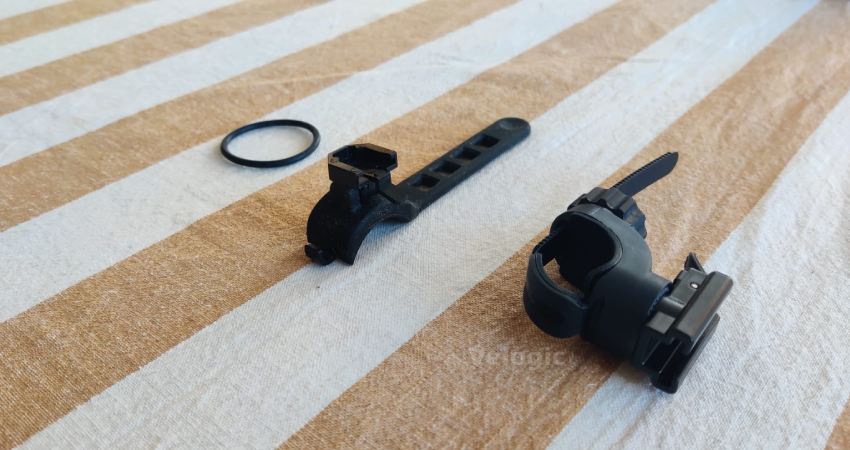
Quality
Quality is one of the most important things when it comes to a bike light. It is too often seen as a gadget where cheaper is better… even though it concerns your safety among the cars. A bike light has various components; quality affects:
- Housing: Metal or plastic, a powerful light can get very hot (be careful). A plastic light will melt, whereas a metal one will survive.
- Mounting: A simple rubber band is usually limited in use and quality. Examine the attachment carefully, as it affects your use and the quality of the light. The bike light should be easy to install, with rotation options. Also, removal should not take too long; it should be user-friendly.
- LED: Not every LED light is equally powerful. The quality of the bulbs affects heat, battery choice, and the number of lumens. More information about different LEDs.
- IPX: Water resistance is an essential feature in countries with changeable climates. In many parts of Europe, we experience quite a bit of rain, a factor not to be underestimated. Water damage is usually not covered by warranty. Pay close attention to this.
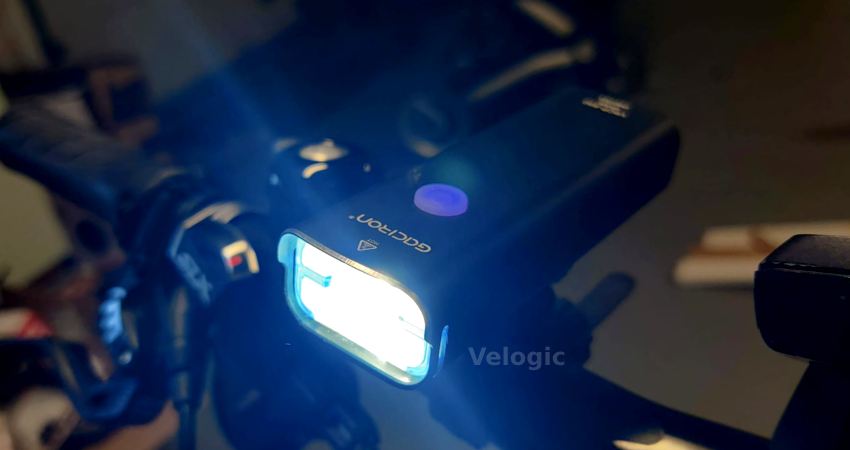
Settings and Smart Bike Lights
If you have different routes at different times of the day, you may want a versatile light. One with enough settings so that you have the right light on at the right time. Some lights are ‘smart’ and have a light sensor to determine the appropriate mode.
What smart bike lights can do
- Automatic adjustment: A smart bike light will automatically adjust the number of lumens to the outdoor light.
- Brake function: A smart rear light can also have a brake function to alert drivers once you start to slow down.
Extra Features
- Blinking mode: Handy for extra visibility, especially during the day.
- Light sensor: Some lights adjust brightness automatically based on ambient light.
- Battery indicator: Shows how much energy is left so you don’t unexpectedly run out of light.
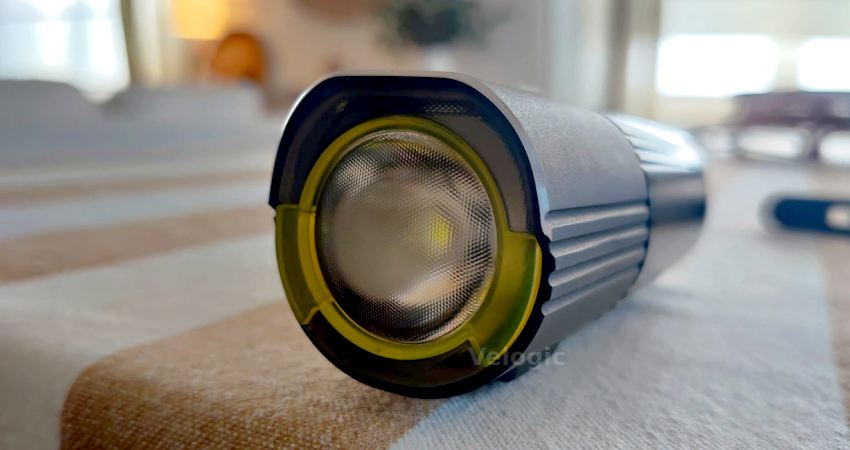
Price and Brand
The price of bike lights varies greatly depending on the brand, features, and quality. Since this concerns safety, we recommend investing in quality.
Additionally, much depends on your route and usage, as discussed above. A light with a metal housing will last much longer than a plastic one. Of course, it makes no sense to pay for a metal housing if you only need 200 lumens.
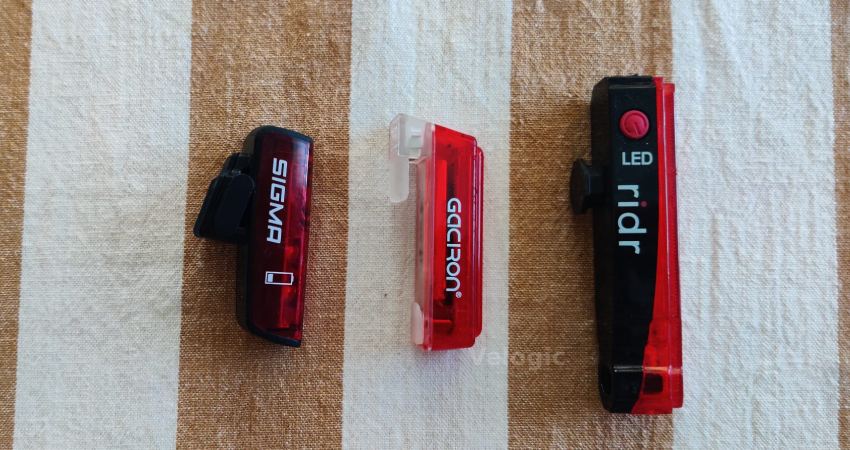
Our Opinion on Choosing the Right Bike Lights
Bike lights come with a 2-year warranty in Europe. If you buy a good light for 75 euros, you pay 10 cents per day for 2 years of use. Quite cheap, right? So, go for a good light. If you’re too lazy to search, check out our suggestions in our comparison of the best bike lights and corresponding rear lights.
If the light breaks, you can rely on the warranty and get a replacement (or your money back). For us, it’s a no-brainer – my safety is worth more than 10 cents.
If you think it’s just about legislation and you buy a cheap light for 10 euros, you’re unsafe on the road, wasted 10 euros, and might even get a 58 euro fine on top of that. All fine until someone hits you.
Bike lighting is crucial for us. Even if we have good lights on our bikes, we still notice that drivers don’t always see us. Especially traffic coming from the sides. They can’t see our lights well. A fluorescent vest or reflective stickers are excellent ways to increase your visibility from the side.


2 comments
[…] the right bike light is not only a matter of legal compliance but also of personal safety. You’re not benefiting […]
[…] our buying guide for bike lighting, we delve into all the elements that make a bike light what it is. They’re getting better all […]